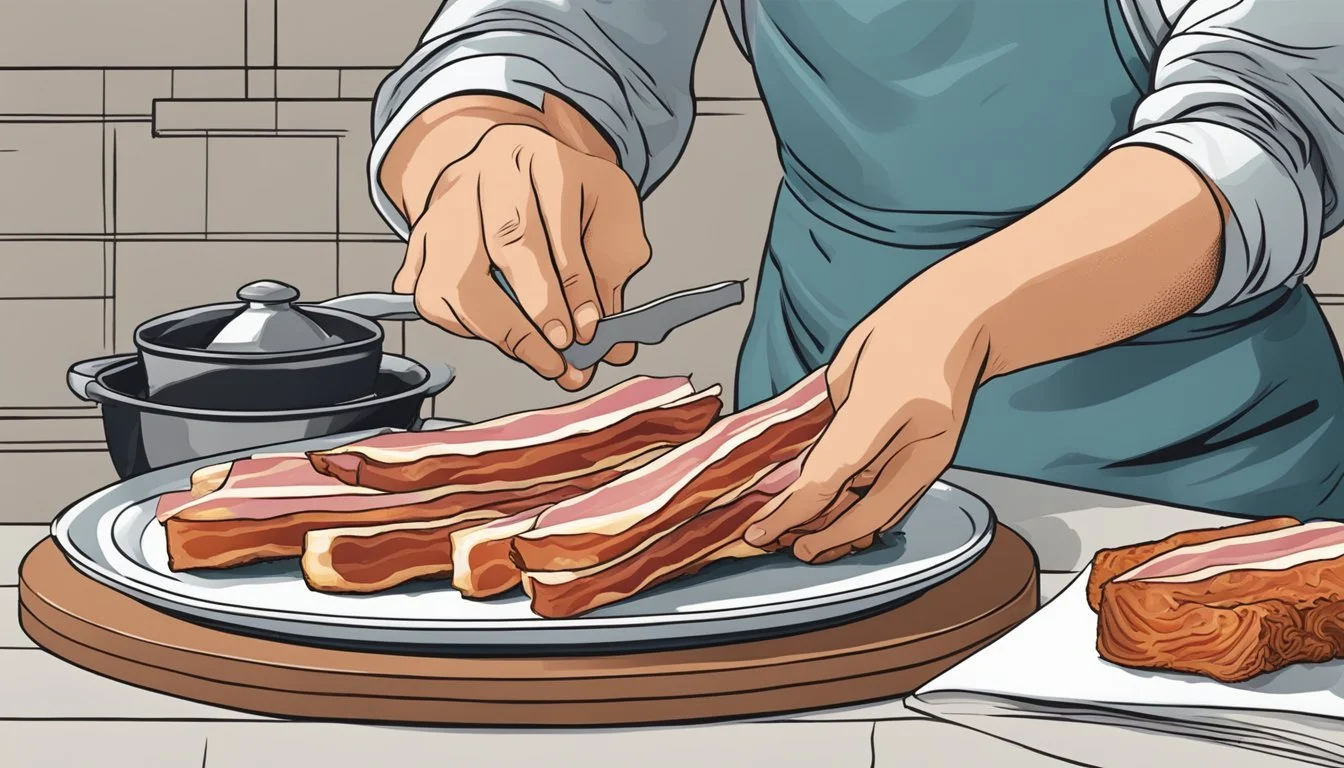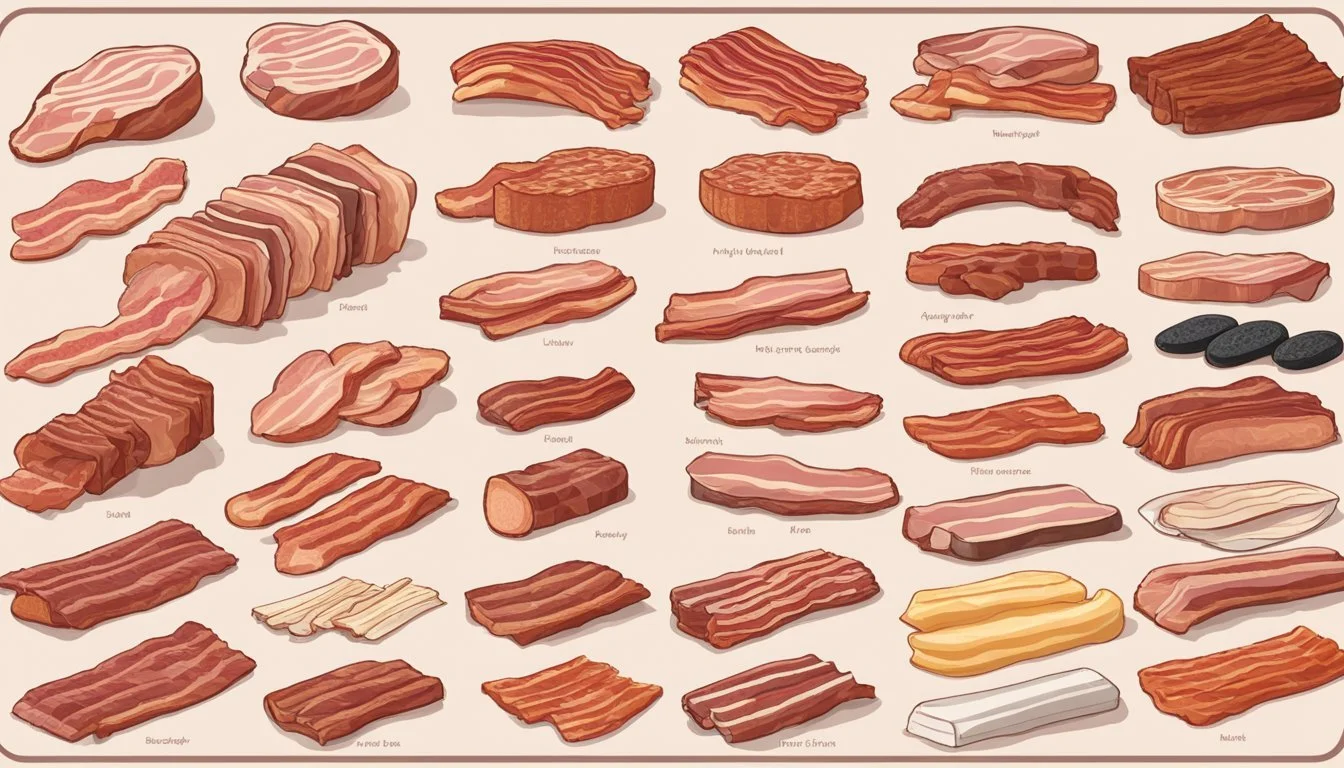How to Substitute Jowl Bacon for Slab Bacon
A Seamless Swap Guide
When a recipe calls for slab bacon (how long does bacon last?), it may not always be readily available or you might be seeking an alternative with a slightly different flavor profile. This is where jowl bacon can serve as a suitable substitute. Jowl bacon comes from the cheeks of a pig, quite similar to slab bacon which is typically cut from pork belly (What wine goes well with pork belly?). Both are cured and smoked, and while slab bacon is more familiar to many, jowl bacon provides a similar rich, smoky flavor with a decadent fat content that can enhance a variety of dishes.
Substituting jowl bacon for slab bacon is quite straightforward, as they are interchangeable in most recipes. Due to its fatty nature, jowl bacon renders down beautifully, making it an excellent choice for adding depth to dishes such as stews, soups, and sauces. It can also be sliced and crisped up for a savory, crunchy garnish. While slab bacon may offer a slightly leaner option, jowl bacon brings its own unique taste and texture that can elevate traditional bacon-based dishes or provide an added twist.
Cooking with jowl bacon is akin to utilizing slab bacon. It can be chopped and added to pasta sauces, wrapped around vegetables, or simply fried until crisp to serve alongside eggs for breakfast. The key to utilizing jowl bacon as a substitute is to make adjustments for its thickness and fat content if it varies significantly from the slab bacon called for in your recipe, as this may affect cooking times and texture. Adapting the cut to suit your culinary needs will allow for a seamless substitution process.
Understanding Bacon Varieties
When exploring bacon substitution, it's crucial to understand the characteristics and varieties of bacon. Different types of bacon provide unique flavors and textures influenced by their cut, curing, and smoking processes.
Jowl Bacon Characteristics
Jowl bacon, derived from a pig's cheeks, exhibits a rich, savory taste with higher fat content than other cuts, making it tender when cooked. It is often cured and smoked, contributing to its distinctive flavor.
Slab Bacon Properties
Slab bacon comes from pork belly, featuring more meat and distinct fat layers. Its texture can be made crispy or tender depending on the cooking method, and it’s known for its versatility in dishes.
Comparing Jowl and Slab Bacon
Jowl bacon boasts a more intense flavor and softer texture compared to slab bacon’s meaty and rich characteristics. Jowl can be crispier due to its fat content, whereas slab bacon offers balanced meat and fat.
Other Bacon Types
Streaky bacon: Cut from the belly; often crispy and fatty.
Back bacon: From the loin of the pig, with a ham-like texture.
Pancetta: Italian bacon that is cured but not smoked.
Guanciale: Cured pork jowl similar to jowl bacon but typically not smoked.
Turkey bacon: Leaner, made from turkey and often seen as a healthier option.
Venison (What wine goes well with venison?) bacon: From deer meat, offering a gamey flavor.
Curing and Smoking Processes
Bacon is first cured using a combination of salt, nitrite, or celery powder. The smoking process, using woods like hickory or apple, further imparts distinctive flavors.
Nutritional Value
Bacon contains protein, sodium, iron, and calories. Jowl bacon generally has higher fat content, influencing its cholesterol levels.
Bacon in Various Cuisines
Bacon varies globally; it can be found as lardo in Italy or substituting ham in traditional dishes, infused in beans, greens, or soup for a richer taste.
Cost and Availability
The cost of bacon depends on the type and cut. Jowl bacon might be harder to find compared to the more common slab bacon, impacting the price for customers.
Culinary Preferences and Trends
Personal preference dictates bacon choice. Some prefer the flavorful and versatile slab bacon, while others opt for the richness of jowl bacon.
Health Considerations
When comparing bacon varieties, one must consider the fat, protein, sodium, and cholesterol content. Some individuals may opt for leaner options, like turkey bacon, due to health reasons.
Substitutes and Alternatives
Turkey bacon: A leaner substitute lacking the richness of pork bacon.
Pancetta and guanciale: Offer similar flavors but differ in curing and cooking.
Beef or venison bacon: Alternatives for those avoiding pork.
Cooking Techniques
Jowl bacon is easy to cook on the grill or stir-fried, while slab bacon can be cubed, cut into thick strips, or thin slices. Cooking alters the texture to either crispy or tender.
Seasoning and Flavor Enhancers
Common bacon seasonings include salt, honey, butter, and brown sugar, which enhance its natural flavor. Such flavorings are key, especially when substituting one bacon for another.
Storing Bacon
Bacon should be stored in the freezer if not used immediately. Wrap it to protect from freezer burn and preserve flavor.
Serving Suggestions
Bacon can be served alongside breakfast items, in sandwiches, or as a texture enhancer in salads. It's also often a garnish or key ingredient in various recipes.
Recipes and Pairings
Bacon pairs well with grilled vegetables, (What wine goes well with grilled vegetables?) beans, and greens. Jowl bacon makes a spicy addition to many recipes, while slab bacon can add meaty richness to heartier dishes.



